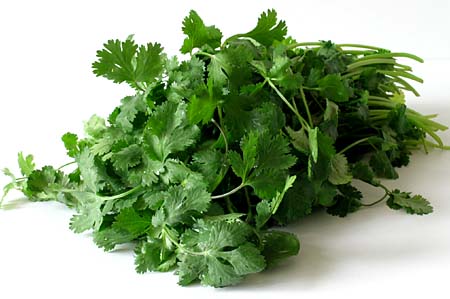
Health Benefits:
Aids in digestion
Combats fatigue
Helps control LDL cholesterol levels
Improves bone and muscle health
May reduce risk of stroke
Relaxation
Relieves bloating
Nutrition:
Serving size: 9 springs; Calories: 5; Fat: .1g; Cholesterol: 0mg; Sodium: 9mg; Carbs: .7g; Fiber: 0g; Sugars: .2g; Protein: .4g; Potassium: 2%DV Vitamin A: 27%DV; Vitamin C: 9%DV; Calcium: 1%DV; Iron: 2%DV
Did You Know?
- Studies indicate that cilantro can prevent food poisoning due to a compound called dodecanol, which kills salmonella bacteria
- There are many people who find the taste of cilantro repulsive. Some describe it as leaving a soapy taste in their mouths. The reason for the unpleasant taste has to do with genetics.
- The Chinese used cilantro in potions, claiming it had the power to give someone immortal life.
Ways to Eat:
- Fresh
- Juiced
- In Mexican dishes or curries
Farming Trivia:
- Cilantro is native to southern Europe and the western Mediterranean region and is one of the oldest spices mentioned in history
- Cilantro is an annual plant that grows best in dry climates, while tolerating full or partial sunlight
- Although it can grow to 2 to 3 feet, the leaves should be harvested when the plant is at least 8 inches tall to obtain the best flavor
Note: Always consult a physician for any specific health questions and concerns. Some of this information may be subject to change should there be any new findings from Federal Health Administration (FHA), Food & Drug Administration (FDA), American Medical Association (AMA), American Cancer Society (ACS), and / or other leading food, nutrition and medical advisors.

